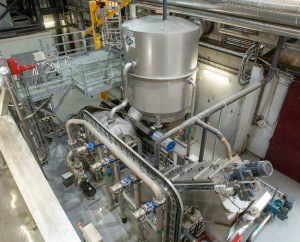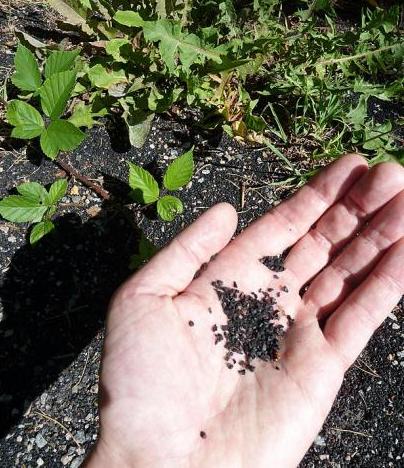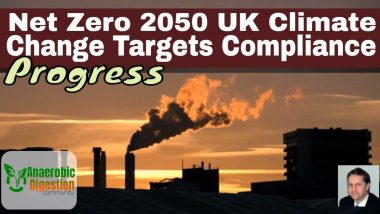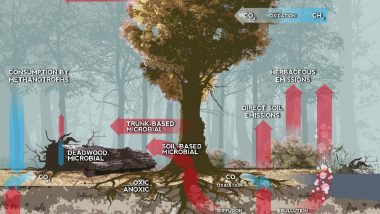Here we lend our support to a move for tighter PAS 110 Rules to stop plastic pollution on land, as we believe that the UK's specification for natural biogas fertiliser needs urgently updating to incorporate controls on the permissible amount of plastic.

The ocean plastic pollution problem can only be solved if society puts a stop to plastic pollution on land.
After-all, most marine plastic starts its life on land and finds its way to the sea. The density and longevity of plastics combine to conspire that in geological timescales almost all land plastic will get washed into the sea.
It's also a matter of concern that plastic present in natural biogas fertilisers is being spread on crops while further research takes place on the possible health risks of plastics in the human food chain.
If no plastic clauses are added to PAS:110, sooner or later media reports about alarming amounts of plastic in natural biogas derived fertiliser (digestate) will surface. That would be very damaging for the biogas industry. It would encourage those that argue that sustainability can never be attained.
It will be far better to be pro-active now, avoid negative publicity as far as possible and revise the specification for all AD outputs of quality fertiliser, and soil improving products.
That's why we support updating the PAS:110 specification to add new maximum plastic content limits, ahead of any bad publicity. If nothing is done the UK AD industry could suffer setbacks from this being seen as in direct conflict with the green reputation of the biogas industry.
The article follows:
Press Release:
PAS 110 Complacency? Time to raise the bar, say Gemidan
As the Environment Agency begins to review its Quality Protocol’s (QPs), it is time, according to one state-of-the-art technology provider, to raise the bar much higher on PAS 110 regulations on the physical contamination in digestate.
Gemidan, who recently opened its third pre-treatment facility, believes that whilst PAS 110 has served a worthy purpose. But, it needs updating. The UK waste industry isn’t challenging itself enough. They cite competition over food waste feedstock and the lack of Government incentives as reasons.
Gemidan also claim that long-awaited regulation to require local authority food waste collection, will dramatically increase the amount of feedstock available for AD operators.
“It is heartening to see the media give so much airtime to the huge problem of plastics polluting the sea, which has rightly brought about huge concern from the public”,
said Tony Pickess from Gemidan.
“But what about plastics polluting the land and then ending up in our streams and rivers? Are we really happy continuing with the practice of spreading poor quality digestate on to farmland?”
He added:
“It’s become all too easy now for companies to say ‘we’ve got PAS 110 so that’s all we need to do’. But, it doesn’t take an environmental scientist to work out that fragments of plastic, as well as glass and metal in natural biogas fertiliser are a danger. They pollute the soil, and may well end up back up in our food chain”.

Pickess also pointed to the traditional, highly aggressive hammer mills used at recycling plants that he says create micro as well as macro plastics that then ironically, creates the burden of trying to remove them. Inevitably, this results in ‘grit and plastic’ entering the reactor, thereby preventing most anaerobic digesters from producing as much gas as they should.
He compares this to Gemidan’s new facility that has been independently tested to prove that its much gentler, lower maintenance pre-treatment technology produces a food waste substrate that is virtually 100% free from non-organic contamination. For AD plants receiving this vastly superior substrate (in terms of purity as well as reduced organic matter particle size), gas generation is much faster, with the added benefits of less wear and tear on equipment throughout the process – and no digestate treatment required.
He continued:
“In addition to preventing plastics and other contaminants from polluting farmland, this has far-reaching bottom-line gains though enhanced gate fee revenues from increased digester throughput.
“We also need to look much more closely at how contamination is being measured exclusively by weight in regard to PAS 110 with plastics being so light. In Denmark this issue is very effectively addressed by having a regulatory limit based on ‘total surface area’ of plastic in waste derived substrates. Addressing this issue in the UK would result in farmers having far more confidence in the quality of digestate-based fertiliser. End-of-waste classification, achieved from tougher and more meaningful contamination requirements would have more environmental credibility and be justified in requiring less in the way of regulation.
“Hopefully the Environment Agency’s review of its Quality Protocols (QPs) can steer the industry towards better practice – and in the meantime, there is always room for a company to seize the initiative by setting their own standards with regard to contamination, just as so many businesses have responded to growing public pressure by changing their policy about the use of plastic”.
For more information on the new Gemidan facility click here.
The media has paid huge attention to plastic pollution of the oceans, but far less to the plastic which is on land. We thought we would do a little to reverse that. Keep reading to find out what is being said about the plastic which ends up on land, or buried in it:
Plastic Pollution on Land
But what of the plastic waste that never reaches the ocean and is instead confined to land? Are plastics a danger to terrestrial animals too?
The answer is a resounding “yes!” Plastic waste that never makes its way to the ocean still ends up being very dangerous to both wild animals and domesticated ones. And the impacts felt by these animals closely mirror their marine brethren. They can suffer from various forms of entanglements as well as accidental consumption which may be deadly. This can be a heartbreaking topic, but it's important to address for the sake of animals everywhere. via www.onegreenplanet.org
More About Plastics Pollution
There are three major forms of plastic that contribute to plastic pollution: microplastics as well as mega- and macro-plastics. Mega- and micro plastics have accumulated in highest densities in the Northern Hemisphere, concentrated around urban centres and water fronts. Plastic can be found off the coast of some islands because of currents carrying the debris. Both mega- and macro-plastics are found in packaging, footwear, and other domestic items.
Plastic pollution on land poses a threat to the plants and animals, including humans, which are based on the land. Estimates of the amount of plastic concentration on land are between four and twenty three times that of the ocean. The amount of plastic poised on the land is greater and more concentrated than that in the water. Mismanaged plastic waste ranges from 60 percent in East Asia and Pacific to one percent in North America.
Chlorinated plastic can release harmful chemicals into the surrounding soil, which can then seep into groundwater or other surrounding water sources and also the ecosystem of the world.
The toxins that are components of plastic include diethylhexyl phthalate, which is a toxic carcinogen, as well as lead, cadmium, and mercury.
Plastic in the Human Food Chain
The human race, through the food chain, ingest these highly toxic carcinogens and chemicals.
Estimates for the contribution of land-based plastic vary widely. While one study estimated that a little over 80% of plastic debris in ocean water comes from land-based sources, responsible for 0.8 million tonnes (790,000 long tons; 880,000 short tons) every year.
Similar to humans, animals exposed to plasticizers can experience developmental defects. Specifically, sheep have been found to have lower birth weights when prenatally exposed to bisphenol A. Exposure to BPA can shorten the distance between the eyes of a tadpole. It can also stall development in frogs and can result in a decrease in body length.
Due to the use of chemical additives during plastic production, plastics have potentially harmful effects that could prove to be carcinogenic or promote endocrine disruption. Some of the additives are used as phthalate plasticizers and brominated flame retardants.
Through bio-monitoring, chemicals in plastics, such as BPA and phthalates, have been identified in the human population.
Ingestion of Dangerous Chemicals which Originate in Plastic
Humans can be exposed to these chemicals through the nose, mouth, or skin. Although the level of exposure varies depending on age and geography, most humans experience simultaneous exposure to many of these chemicals.
Average levels of daily exposure are below the levels deemed to be unsafe, but more research needs to be done on the effects of low dose exposure on humans. A lot is unknown on how severely humans are physically affected by these chemicals.
Due to the pervasiveness of plastic products, most of the human population is constantly exposed to the chemical components of plastics. Most adults in the United States have detectable levels of BPA in their urine. Exposure to chemicals such as BPA have been correlated with disruptions in fertility, reproduction, sexual maturation, and other health effects. Specific phthalates have also resulted in similar biological effects.
More About Bisphenol A and BPA
Bisphenol A affects gene expression related to the thyroid hormone axis, which affects biological functions such as metabolism and development. BPA can decrease thyroid hormone receptor (TR) activity by increasing TR transcriptional corepressor activity. This then decreases the level of thyroid hormone binding proteins that bind to triiodothyronine.
BPA can disrupt normal, physiological levels of sex hormones. It does this by binding to globulins that normally bind to sex hormones such as androgens and estrogens, leading to the disruption of the balance between the two. BPA can also affect the metabolism or the catabolism of sex hormones. via en.wikipedia.org





To stop plastic pollution. “If your bathtub was overflowing, you wouldn’t immediately mop it up, you would first turn off the tap” I saw this quote on Instagram in regards to plastic pollution and it’s one of my best thoughts!” Everyone. Please, consider turning off the tap. It makes sense.
Does anyone know whether the current 2014 version of PAS110 is being updated by WRAP?
Interesting stuff to read. This plastic pollution needs sorting out and quick! Keep it up.